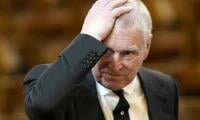Pakistan’s ‘bubble’ economy
The gradual retreat in the past week from a striking fall of the rupee and Pakistan’s stock market has brought a long overdue relief for the country’s increasingly shrinking community of investors.
Beneath the surface, news of Islamabad’s expected compliance with harsh conditions tied to an IMF loan has also renewed an oft-witnessed ugly trend – the prospective return to a bubble economy with no assurance of a sustained turnaround.
For years, successive Pakistani governments have, under pressure from ongoing economic challenges, periodically championed the ‘sub achha’ (all is well) spin to put a gloss on a dismal outlook. Today’s Pakistan is no different. It would be unfair to stick the onus of responsibility on any one regime, given the sliding conditions over a longer period of time.
The regression across Pakistan’s economic frontier has witnessed an ever yawning gap between the rich and the poor, with no evidence in sight of a long overdue turnaround. Almost simultaneously, periodically recurring fiscal and balance of payments crises have together reinforced the powerful reality of an economy which is out of sync with its own multiple gaps.
With Pakistan’s next budget due in the coming days, it's likely that the nation’s economic managers will successfully negotiate a return to a semblance of stability. Fundamentally, that will see Pakistan return from an imminent danger of a default on its loan repayments while the rupee and the stock market will likely gain further ground. These trends will eventually be buoyed by a resumption of payments from the IMF, though without clarity on how long this new phase will last.
But is the new reality sufficient to lift prospects for Pakistan’s mainstream population for the long haul? The answer to that long-term riddle lies in part on the fate of the ‘bubble’ economy. In contrast to an expected default on upcoming debt repayments, the subject of routine chats on evening talk shows, Pakistan will be pushed back to appearing as a solvent country.
Yet, behind the bubble lies the powerful reality of the bulk of Pakistan’s population increasingly stretching their budgets. Last week’s oil price increasing by roughly 20 per cent and expectation of more increases to follow, has already unleashed a volley of price hikes of essential items. Notwithstanding Prime Minister Shehbaz Sharif’s package to support the poorest of the poor, the net effect of the oil price hike is set to leave Pakistanis shortchanged. And more of the same is due to come with reports of increases in key tariffs, notably electricity in days to come.
Surrounded by another meaningless ‘bubble’ bringing little solace to mainstream household budgets, Pakistan faces a daunting challenge in managing its economy. Though the recent slide brought back a sense of deja vu comparable to the times when similar crises were witnessed, there was clearly one major difference – that the scale of the latest crisis was significantly larger than ever before.
Going forward, Pakistan’s ‘bubble’ is set to continue till it bursts again, an inevitable outcome in view of a recurring failure to redress the most vital challenges. Turning around Pakistan’s fate from an era of upcoming bubbles to a sustainable recovery requires a long overdue push on two interrelated fronts.
On the one hand, it is vital for Pakistan to cut down radically on unnecessary consumption that has increasingly plagued the country for at least three decades. Unless the country is able to afford a range of luxury goods, notably from luxury cars to exotic and often steeply expensive food items, space must never be created for their large-scale import without enough export income to balance the two. Meeting this objective requires a radical lift in facilitating investors to produce exportable surpluses, following significant improvements in sectors like improving skills for the workforce, and a visible improvement in the law and order environment and filling gaps in the policy environment. Though these objectives are visibly straightforward, they require a change in the way that Pakistan has met the needs of its business sector.
At the same time, tackling the international trade deficit can just not be successful unless in tandem with a large set of reforms to lift Pakistan’s chronically insufficient production in the agriculture sector. Unless the vast community of Pakistan’s agriculturists are backed with a series of bold reforms to sharply improve their yields, the country’s population of 220 million will continue to stretch the food import bill for the foreseeable future.
On the other hand, Pakistan must reconcile itself to removing its fiscal imbalances on an emergency basis. This requires a tough determination to deal with vital challenges, notably tax evasion and sizable subsidies of government-owned companies. Together, gaps in these two areas have bled Pakistan far more dangerously than any other sector in the nation’s 75-year history.
The writer is an Islamabad-based journalist who writes on political and economic affairs. He can be reached at: farhanbokhari@gmail.com
-
 Spotify Introduces New Monthly Subscription Pricing Plan For 2026
Spotify Introduces New Monthly Subscription Pricing Plan For 2026 -
 Shocking Prediction About Meghan Markle's Career In 2026
Shocking Prediction About Meghan Markle's Career In 2026 -
 Kate Middleton Hosts Reception In London As Prince William Out On Engagement
Kate Middleton Hosts Reception In London As Prince William Out On Engagement -
 Mel C Teases 'precious' Future Plans
Mel C Teases 'precious' Future Plans -
 Teyana Taylor On Julia Roberts Telling Her To 'eat A Sandwich' At Golden Globes: 'Started Crying'
Teyana Taylor On Julia Roberts Telling Her To 'eat A Sandwich' At Golden Globes: 'Started Crying' -
 Minneapolis: ICE Officer Fires Bullet After Migrant Attacks With A Shovel
Minneapolis: ICE Officer Fires Bullet After Migrant Attacks With A Shovel -
 Prince William Gets 'mobbed' By Animals During Rural Engagement
Prince William Gets 'mobbed' By Animals During Rural Engagement -
 Angelina Jolie Finally Escaping L.A.?
Angelina Jolie Finally Escaping L.A.? -
 Matthew McConaughey Takes Legal Action To Save THIS Iconic Phrase From AI Misuse
Matthew McConaughey Takes Legal Action To Save THIS Iconic Phrase From AI Misuse -
 Jodie Foster Reflects On Harsh Reality Of Why She Escaped Sexual Abuse As Actress
Jodie Foster Reflects On Harsh Reality Of Why She Escaped Sexual Abuse As Actress -
 Prince Harry, Meghan Markle To Have Baby In 2026?
Prince Harry, Meghan Markle To Have Baby In 2026? -
 Bella Hadid Steals The Spotlight At 'The Beauty' Premiere
Bella Hadid Steals The Spotlight At 'The Beauty' Premiere -
 Taylor Swift 'worst Photos': Singer's Not-so-perfect Moments Spark Debate
Taylor Swift 'worst Photos': Singer's Not-so-perfect Moments Spark Debate -
 Arizona Mother Traces Missing Son Living In Neighbour’s Home After Killing Hm
Arizona Mother Traces Missing Son Living In Neighbour’s Home After Killing Hm -
 OpenAI Launches ChatGPT Translate To Rival Google Translate
OpenAI Launches ChatGPT Translate To Rival Google Translate -
 Top AI Themes Poised To Shape 2026: Here’s How
Top AI Themes Poised To Shape 2026: Here’s How



